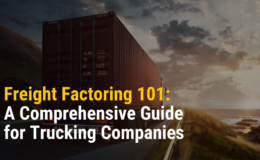Freight payroll, in both trucking and railroads, was cut drastically in April. In an industry desperate to hire career drivers, and facing a loss of employees, why is freight payroll being slashed?
Expanding Freight Payroll
Since the start of 2018, freight payroll has been growing. Incentives were offered to new hired to fill new positions and foster careers in the trucking industry. The move made sense. Not only only did an increased freight payroll help to fill vacant positions, but it also allowed trucking companies to meet the demand placed on the industry in a booming economy. Manufacturers were adding jobs to meet consumer demand, and trucking followed, because manufacturers rely on truckers to get shipments to consumers. By the end of March, trucking tonnage increased by 6.3 percent from the previous year, according to the ATA.
What Happened In April?
One of the biggest competitors for jobs from the trucking industry is in construction. Over the past year, the trucking industry added roughly 17,000 jobs. The construction industry also did the same, and the benefits are drawing people away from the trucking industry. Another factor which affected freight payroll is the hiring process. Many trucking fleets pushed to hire available drivers, while prospective career truckers are still finishing their certification to drive class-8 vehicles.
Last Mile Trucking
As we reported last month, many trucking fleets are shifting the focus on hiring to those who can deliver goods to people’s homes. With the rise in e-commerce, trucking companies are looking for drivers who are willing to go that extra mile to deliver and install appliance and similar products for individual customers. The licensing requirements for these short-distance hauls is not as stringent as traditional truck driving positions for long haul and interstate trips. Simply because conventional freight payroll seems to have been cut, does not mean fleets have stopped hiring or offering incentive – the focus has just changed.
E-commerce for the freight industry hovered around $12 billion in 2017, and is projected to double by 2020. Perhaps the trucking industry is shifting from long haul drivers to segmenting the workforce into dedicated interstate drivers, and more small-radius chains to deliver shipments to individuals to compensate for the increase in e-commerce orders.
As always, Express Freight Finance will keep readers up to date on any changes in freight payroll and hiring trends within the trucking industry.






